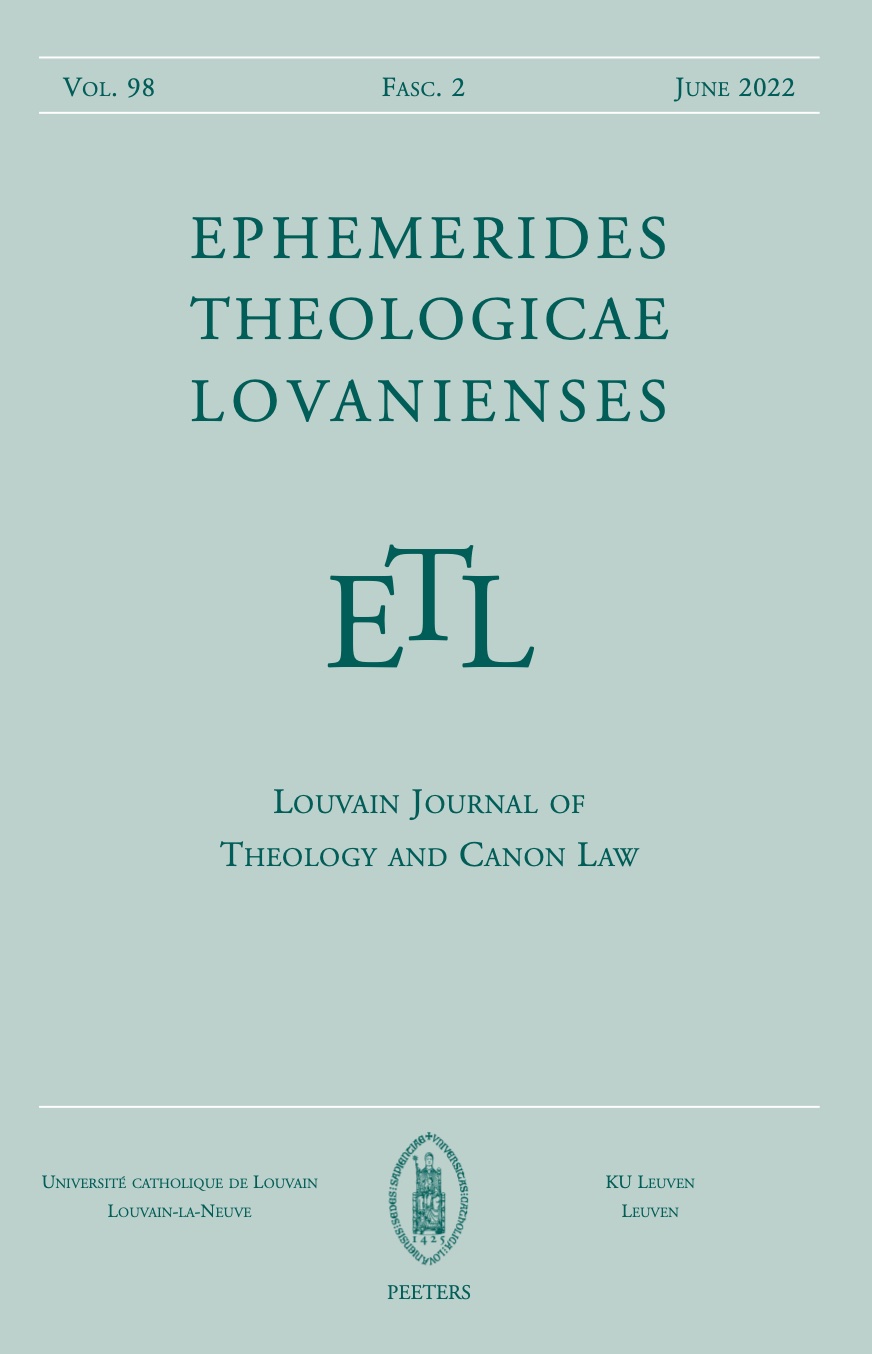 previous article in this issue previous article in this issue | next article in this issue  |

Preview first page |
Document Details : Title: Three Leuven-type Readings of Romanness in John 18,28-19,22 Author(s): WASSELL, Blake Journal: Ephemerides Theologicae Lovanienses Volume: 97 Issue: 4 Date: 2021 Pages: 591-627 DOI: 10.2143/ETL.97.4.3290077 Abstract : What could the synoptics have to do with John’s view of Rome? The hypothesis is that the rhetorical construction of Romanness in John 18,28-19,22 is part of an attempt at ambiguous deconstruction of the synoptics. The study contains three cases that begin with under-appreciated, if well-known, ambiguities in John. Why does Barabbas (John 18,40) disappear without mention of his release (unlike Mark 15,15; Matt 27,26; Luke 23,25)? How can Pilate refuse to amend his inscription on the cross (John 19,22) after the priests invoke Caesar (vv. 12.15)? Who is 'the deliverer of Jesus', and what is their 'greater sin' (v. 11)? In each case John seems to be recycling and even challenging the synoptics in order to develop its own post-colonial programme. John adopts – not rejects – Romanness as much as it expropriates Jewishness from its diabolical Ἰουδαῖοι who destroy the temple of Jesus’ body. |
|


